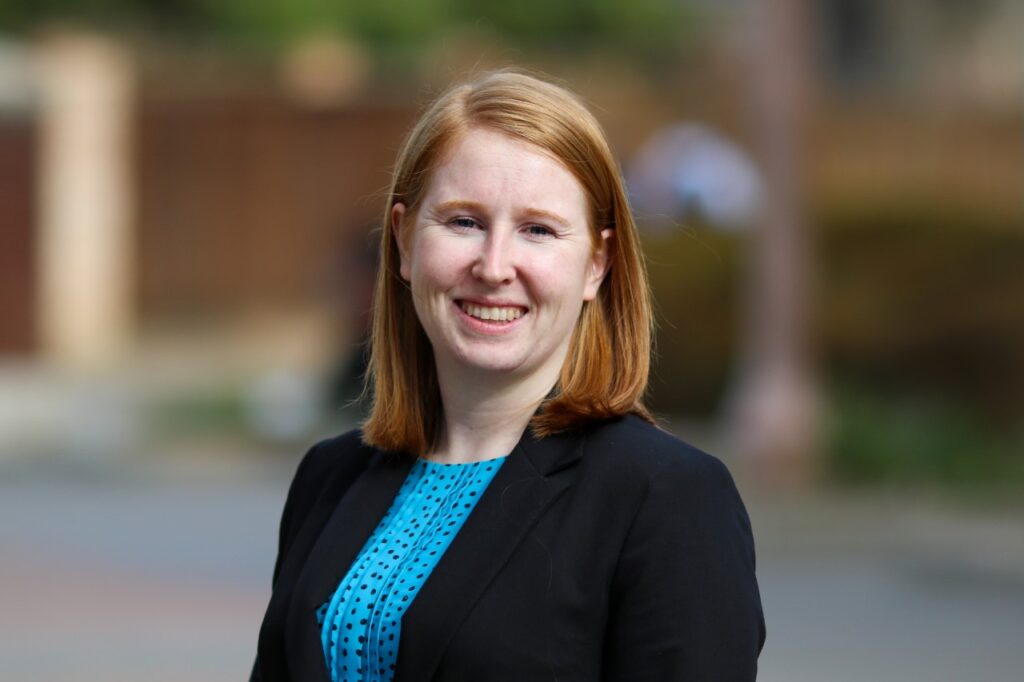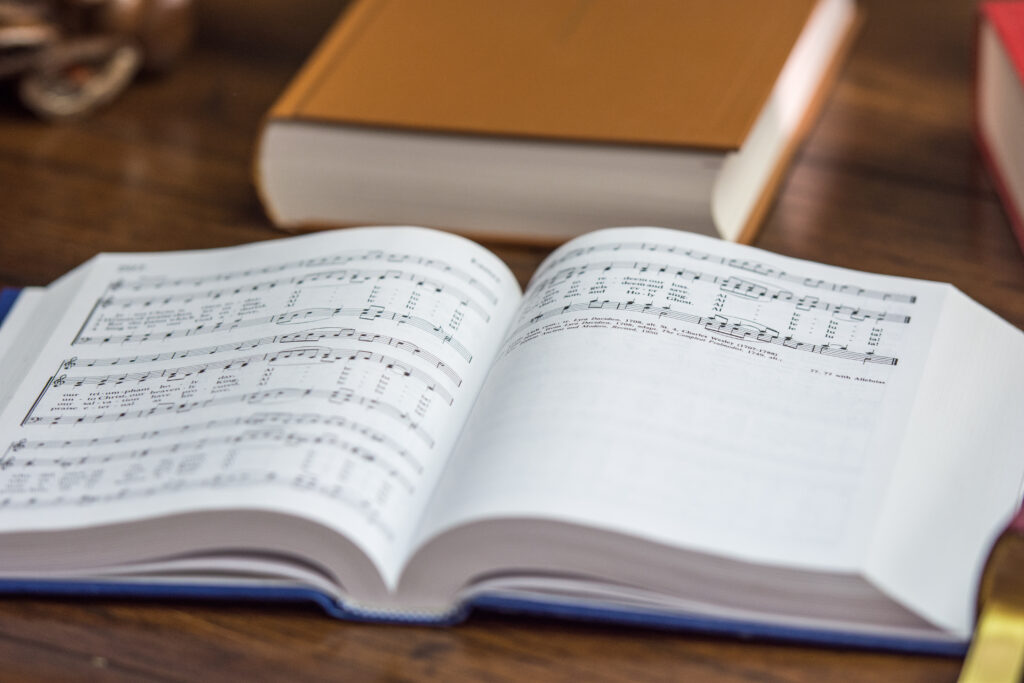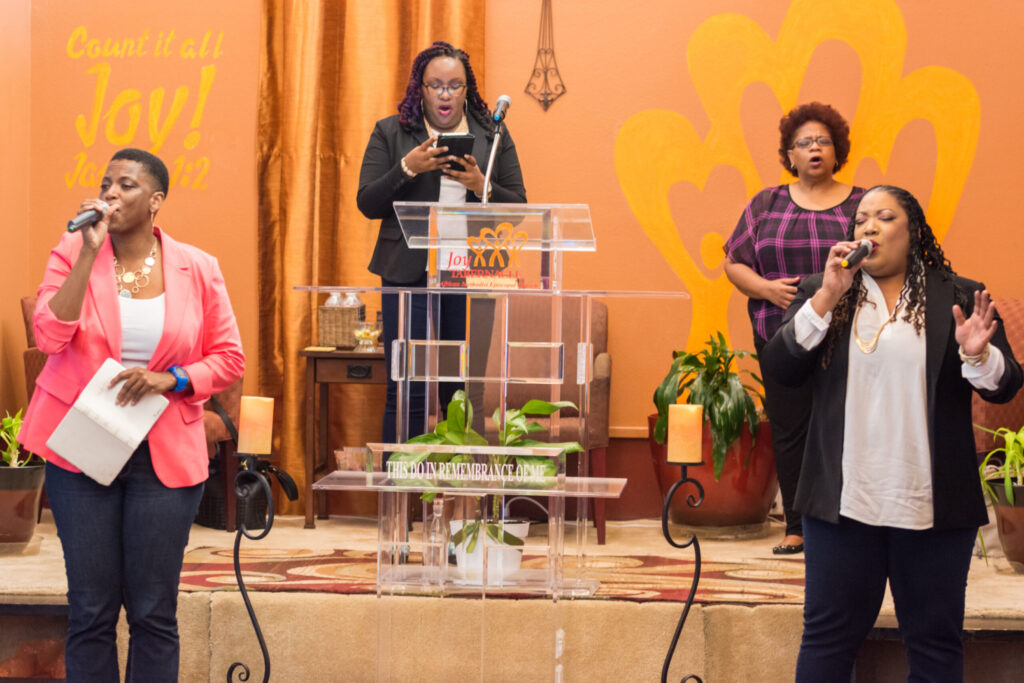Most of the time when we think about what we should sing we are thinking about what we should plan for the congregation to sing based on a song’s theology or melodic range. At the same time, there are decisions that vocalists need to make about what to sing based on the recording of the song and the resources given to them.
For many songs, the words and music are provided for the performer. For those singing in a choir, there is often an octavo that includes unique parts for each section, whether SATB, SSA, or TTBB. This music comes with directions such as dynamic and tempo markings. The conductor communicates how they want those directions to be performed, but they are still provided for the performer. Even for non-choral works, instrumental performers are provided with the same instructions for tempo and dynamics, among other things.
The question remains: at what point do we decide what is intended to be sung and what was for the performance on the recording?
When we turn to the music of the church, choirs still often sing from octavos, but what about the congregation? In many cases, churches use a hymnal. Depending on the song, there could be a four-part harmony with parts for bass, tenor, alto, and soprano, or there could be a song that has just the melody with the piano accompaniment. Either way, the melody and the lyrics are provided. But what about songs that are not in the hymnal?
Many churches provide only lyrics for their congregation on screens at the front of the worship space. In these situations, the congregation learns the melody as the song is led. These songs are available on the radio and streaming services to listen to throughout the week, and they are rarely ever used once. So, the congregation learns these songs as the church repeats them throughout the year.
While teaching the congregation over time may seem like a simple task, the resources provided for some of these songs makes it complicated for the vocalist and for whoever puts the slides together. Some churches will use the provided lead sheets from SongSelect for their songs. These lead sheets are often transcriptions of a specific performance of a song, often the recorded version by the original artist. As a transcription, every detail of the performance is documented, including all artistic options, ornamentations, and ad-libs. For vocalists who are used to choral singing, they will often sing the provided music exactly as it is written. This creates a consistency between the song they’ve been listening to and practicing and the music they are following. They sing the song like the recording.
The question remains: at what point do we decide what is intended to be sung and what was for the performance on the recording?
There are two parts to answering this question. First, what should the vocalist sing? Second, what should be displayed on the screens for the congregation to sing?
What should we sing?
The resources provided to vocalists are often confusing. The melody line includes every detail of an artist’s performance down to the 32nd note. Does that mean the vocalist is expected to sing the song exactly like the original artist? The answer to this question may depend on the worship pastor or music director’s preference. However, in the absence of direction, I want to offer some guidance for how to approach these lead sheets and recordings.
First, be familiar with the original recording. Step one of leading any song is knowing how the song goes. Listening to a song is included in the preparation and practice of a song. If it is a live recording, distinguish the difference between the lead vocalist and the congregation or background vocals. In spaces where the primary vocalist makes an artistic choice, do the congregation and background vocalists follow, or do they remain on a melody part? This first piece will help the vocalist decide what the melody is for each section. In some instances, the artist may decide to make some changes in the second verse. By discerning the melody, the vocalist can discern whether the artist chose to make some alterations in their performance or if the melody of the second verse is actually different. Some examples of this would be two songs by Charity Gayle, “Endless Praise” and “I Believe.” In both songs, Charity chooses to change the melody in the second verse, providing momentum and a dynamic shift leading back into the chorus. You can hear this shift in the examples below:
In these songs, verse 2 includes a melodic change and not merely an artistic decision. Verses can either stay the same melodically or they can include slight changes. Once it is decided what the melody is and what is not, then the vocalist has the basic knowledge of what to sing.
Some recordings make it difficult to decide what the melody is in the chorus. Many artists will choose to sing a third above the chorus for dynamic effect in multiple repetitions. Phil Wickham is known for this, as seen in the final chorus of “Living Hope”:
It is also common for female vocalists to jump the third towards the end of repeated sections like the bridge. When this is done, the congregation will continue to sing the melody with another vocalist while the lead vocalist shifts up, as in this example from Brooke Ligertwood’s “A Thousand Hallelujahs.”
Second, the vocalist has to discern what is an ad-lib and what is a part of the song. This is the part that becomes especially difficult. Lead sheet transcriptions will include every aspect of the vocalist’s performance, including the sung sections that are not a part of the core of the song. I’ve written more about ad-libs and identifying them here. For a vocalist, though, this is an important decision to make. If your church normally does not sing ad-libs, it might seem strange to sing these written parts that are not sung by the congregation. In those settings, one should probably not sing the written sections in interludes or instrumentals. If the church follows the philosophy of sounding like the recording, then the expectation would likely be to sing the ad-libs. In some instances, though, if the church regularly has vocalists filling the instrumental spaces with ad-libs, then a vocalist may even be expected to sing their own ad-libs, which would also be a deviation from what is written. The improvisation of sung ad-libs comes with practice and through the process of imitation, like guitar solos. If one is just beginning to learn to ad-lib, the vocalist may start by performing a song identical to its recording. After some time, the vocalist gains confidence and the skills to create new ad-libs.
Lastly, for both artistic decisions during a sung or instrumental section, it is important for the other vocalists to know what to do in these moments. If the vocalist is making an artistic decision in a major sung section (e.g., chorus or bridge), such as singing the third above, it is important to have another vocalist take over the melody for the congregation to follow. Similarly, if the practice of the church is not to sing ad-libs, then it is important for all the vocalists not to sing into the microphones during the instrumental sections.
So what should the vocalist sing? Well, it depends on the context. Whether your church practices singing ad-libs or not, the vocalist needs to discern the melody within each section and what he or she will sing to lead the congregation.
What should we display on the screen?
The final question that remains is what to display on the screen for the congregation to sing. Like the lead sheets, ProPresenter (and other presentation programs) offer an import feature from SongSelect. While this can save time, it usually incorporates all the text from the song, including the sections from the lead sheet that are not in the main sections. Thankfully, the vocalist’s decisions will help with the process of deciding what to keep and what to delete. If the vocalist does not sing any ad-libs, then the words on the screen should only be the ones that the vocalist sings. If the vocalist does choose to sing ad-libs, the slides person will need to discern whether these ad-libs are a part of the song or if they are truly ad-libs. If they are truly ad-libs, then they should be left off the slides since they are not intended for the congregation to follow. These ad-libs act as exhortations to the congregation in their singing.
Some songs have the same ad-libs in the instrumental sections every time the song is performed, so some churches choose to include these on the slides for the congregation to sing along. One example of this would be the interlude in the song “Cornerstone” by Hillsong Worship. Some people may not even realize that the interlude section between the double chorus at the end, with the lyrics “He is Lord / Lord of all,” is actually an ad-lib.
In this video, the lyrics are displayed on the lower thirds of the screens in the background. These lyrics are not displayed during the interlude section before the chorus. They are also not included in the lyrics in the description for the video. Some churches, though, choose to sing these interlude lyrics congregationally. If that is the case, they should be included. If they are not intended to be sung, then they should not be displayed, and the vocalist has the option to sing that ad-lib or their own.
Sometimes these sung ad-libs won’t be put on the screen, and the vocalist may sing the version from the recording, and the congregants who know the song may choose to sing along anyway. An example of this would be the song “Promises” by Maverick City Music. Before the bridge, Naomi Raine sings some version of the lyrics “Oh Your faithfulness / It never runs out / It never runs out.” In the videos, you can see that the lyrics are not on the screen, and in each iteration, she sings these words slightly differently; however, some people in the audience are singing those words along with her even though they are not on the screen.
If people are singing along, it may seem like an obvious decision to put the lyrics on the screen. However, if the lyrics are put on the screen, then the vocalist must sing them exactly for the congregation to follow. By choosing not to include them, the vocalist has the freedom to sing either the same words or something similar, and the congregation has the freedom to sing along with them or to sing their own ad-libs.
Conclusion
So the answer to what we should sing and what should be put on the screens can be answered with three questions:
- What is the current practice of the church related to singing in instrumental sections?
- What is the melody, and what are the lyrics within each major section?
- What is meant for the congregation to sing, and what is meant for only the vocalist to sing?
With these three simple answers, the vocalist will know what to sing, the slides person will know what to display, and the congregation will know what to follow. The goal is to lead the congregation faithfully, so it is important to know what your church’s philosophy is regarding what is appropriate to sing in that context. If you are not the worship pastor, make sure to ask what the expectations are. If you have been attending that church for a while, this may already be clear. If you are the worship pastor, though, it is important to make sure you have set the expectations so that your vocalists know what and how to prepare for your worship services.
 Blogger Shannan Baker is a postdoctoral fellow in music and digital humanities at Baylor University, where she recently finished her Ph.D. in Church Music (2022).
Blogger Shannan Baker is a postdoctoral fellow in music and digital humanities at Baylor University, where she recently finished her Ph.D. in Church Music (2022).



 I recently became aware of how little we know of what the church sings though recent work with the Worship Leader Research (WLR) team. WLR is a collaborative group that studies the contemporary worship music industry and church practice. Some of the feedback to our findings largely focused on what was missing. We identified the primary contributors of contemporary worship songs by looking at the Top lists from CCLI and PraiseCharts, but there were artists that are widely used that were not found on both lists. Many churches that sing songs from other artists, such as Sovereign Grace, City Alight, the Gettys, etc., noted that our research didn’t include songs from those artists. People commented on social media and in direct messages to our team about the songs that they sing regularly at their church that weren’t mentioned in our study because of our methodology for creating our list.
I recently became aware of how little we know of what the church sings though recent work with the Worship Leader Research (WLR) team. WLR is a collaborative group that studies the contemporary worship music industry and church practice. Some of the feedback to our findings largely focused on what was missing. We identified the primary contributors of contemporary worship songs by looking at the Top lists from CCLI and PraiseCharts, but there were artists that are widely used that were not found on both lists. Many churches that sing songs from other artists, such as Sovereign Grace, City Alight, the Gettys, etc., noted that our research didn’t include songs from those artists. People commented on social media and in direct messages to our team about the songs that they sing regularly at their church that weren’t mentioned in our study because of our methodology for creating our list. So how do we know what hymns are being sung by the Church? Well, the answer may seem simple—look at the hymnal. But which hymnal? There is a vast number of hymnals and many denominations have their own hymnals which contain a careful curated collection of songs that is different from other denominations. Even if one focused on a singular widely used hymnal, the Church does not simply start at #1 and go to the end of the book. Specific hymns are selected each week for worship. Again, churches are not required to report what hymns they are singing. So how do we know what the church is singing?
So how do we know what hymns are being sung by the Church? Well, the answer may seem simple—look at the hymnal. But which hymnal? There is a vast number of hymnals and many denominations have their own hymnals which contain a careful curated collection of songs that is different from other denominations. Even if one focused on a singular widely used hymnal, the Church does not simply start at #1 and go to the end of the book. Specific hymns are selected each week for worship. Again, churches are not required to report what hymns they are singing. So how do we know what the church is singing? Since it is not on CCLI, there is no way to report the songs that are used. Unfortunately, there isn’t a singular book that contains a collection of gospel songs from which to choose. If there is no requirement to report, how do we know which gospel songs are being used the most? How do we know what the church is singing?
Since it is not on CCLI, there is no way to report the songs that are used. Unfortunately, there isn’t a singular book that contains a collection of gospel songs from which to choose. If there is no requirement to report, how do we know which gospel songs are being used the most? How do we know what the church is singing?